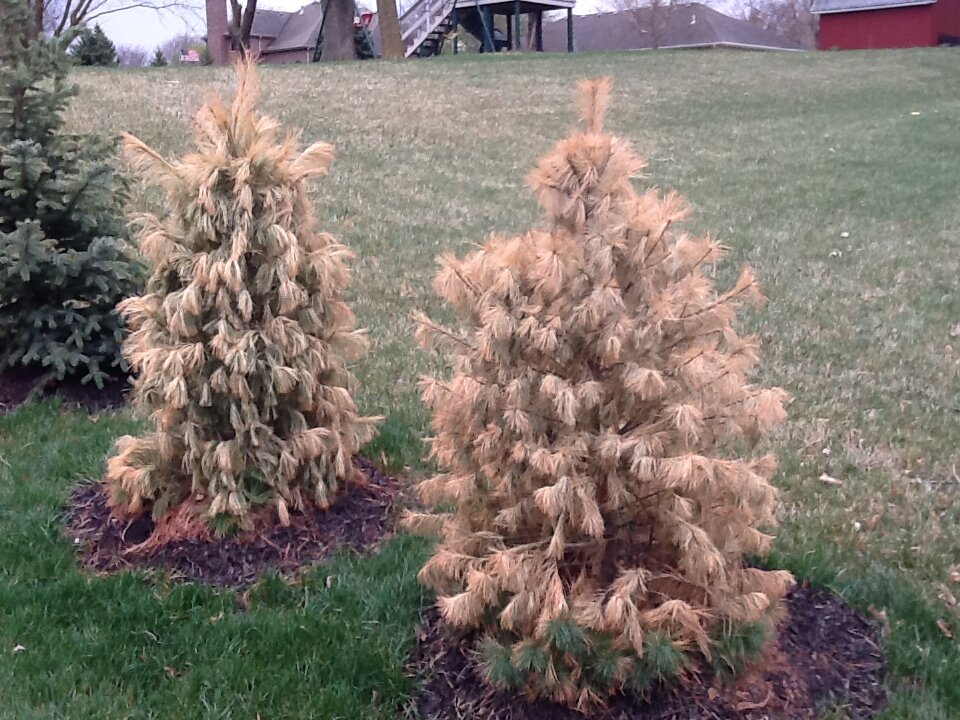Tree Care During the Winter

It’s cold outside these days and our trees are still alive, they are just dormant. And even a dormant tree, still needs care during the winter months.
New Pruning Guidelines
We have always pruned deciduous trees in late winter, however new research shows the optimum time to prune is really in the late spring to early summer. It was determined that it is best to prune trees when they are most actively growing to promote quick wound closure.
You may not always have a choice on pruning time based on the company you hire or if pruning is to repair damage from a storm. Also, some trees such as maples, willows, birches and others will produce a lot of sap if pruned in the late winter or early spring, they should be pruned in late fall. Oaks should not be pruned from April-July to avoid damage from oak wilt disease, they can be pruned in the late fall as well.
Winter Watering
Ensure adequate watering throughout the entire growing season for all trees and shrubs, especially those recently planted. Water throughout the winter when the ground is not frozen, as necessary. Winter watering should occur around midday on days when the temperature is at least 40-45 degrees Fahrenheit and is only necessary 1-2 times per month until spring. It is a good idea to test for soil moisture with a long screwdriver or soil probe prior to watering to determine if watering is necessary. If the screwdriver goes into the soil easily, watering is not necessary. However, if pushing the screwdriver into the soil is very difficult, plants should be watered.
Winter Desiccation
Winter desiccation commonly occurs on evergreen types of trees and shrubs and is more common in winters with little or no snow cover when plants are exposed to cold, drying winds. All trees transpire, or lose water, even through the winter. Evergreens transpire at a higher rate than deciduous trees and therefore suffer more during winter. Winter desiccation occurs when the amount of water lost is greater than the amount of water the plant takes in throughout the winter. The damage appears as brown needles or leaves on branch tips. However, the damage does not usually show up in our trees until early spring, so they will stay green through the winter. Winter desiccation can be managed through winter watering and anti-desiccant sprays.
Anti-desiccant sprays, or anti-transpirants, help reduce transpiration water loss from foliage. Most are an emulsion of wax, latex, or plastic to put a thin film on the foliage and reduce water loss. Plants such as arborvitae, pines, boxwoods, holly, Oregon grapeholly, Japanese spurge, euonymous and others can benefit from using an anti-desiccant spray to protect them through the winter. Anti-desiccants should be applied after late November, once they have completely hardened off. Do not apply these products too early in the year. They can be reapplied through the winter or until mid to late February. Always read and follow the label for how to apply and how often to reapply. Also, be sure to clean out the spray tube in ready-to-use products or garden sprayers with soapy warm water to avoid clogging.
Tree Wraps
The trunks of young, tender barked trees are prone to winter sunscald until the tree is mature enough that the bark becomes thick and woody. Damage occurs to the south or southwest side of trees during warm winter days. Sun shining on the bark heats it up. Damage occurs when bark cells lose some of their cold-hardiness during the day, then are damaged as temperatures fall below freezing at night. Damage can be seen as discolored and/or sunken bark, peeling bark or bark cracks in the years following the incident. Once the damage has occurred there is no cure for it. It is better to wrap the tree with a tree wrap through the winter months to protect it before the damage occurs. Remove the wrap in the spring to avoid other insect and disease problems from occurring under the wrap. If you have had mouse or other rodent damage previously, you may want to use a short piece of white PVC drain tile to avoid both problems.
This article was reviewed by John Fech